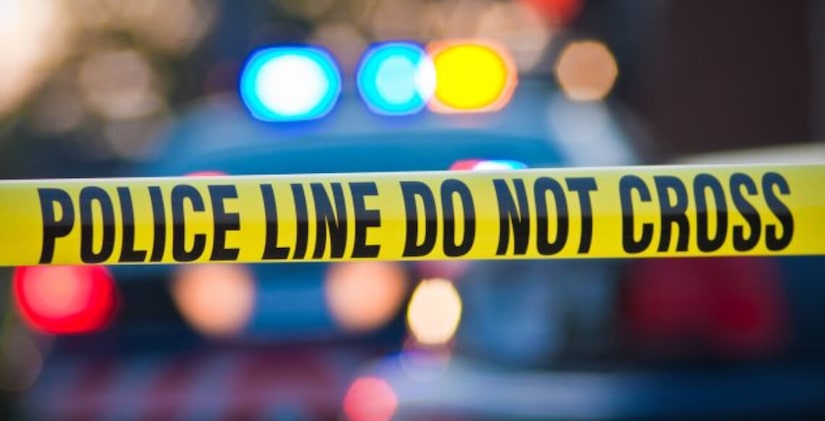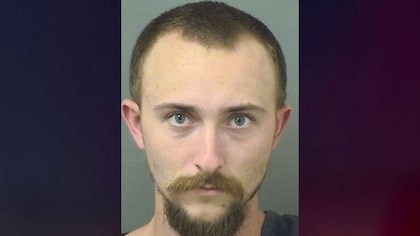Wife, attorney allege murder in renowned sculptor's death by bulldozer
11/21/2016 12:56 pm PST
UPDATE Dec. 9, 2016:
Authorities are investigating a warehouse fire in a building that is part of the property called Cementland, owned by the late artist Bob Cassilly.
Large drums marked "flammable" were found and there were several small explosions. The cold weather also made it tough on crews as well.
The fire heavily damaged a warehouse on the property that contained hundreds of Cassilly's molds, which were capable of recreating much of his work.
November 21, 2016:
A world-famous artist who designed a museum in St. Louis was found dead at the site of his next creation.
Bob Cassilly's bloody body was found slumped in the cab of a crashed bulldozer that police say rolled down a hill at a sprawling new project Cassilly was building, called Cementland, on Sept. 26, 2011. Was it just an accident, or something more sinister?
An acrimonious divorce, an ugly family feud and a troubled business partnership. Such were the final days of Bob Cassilly, an eccentric 61-year-old sculptor who became legendary turning what many would consider discarded industrial junk into works of art at his City Museum in St. Louis.
Cementland is a kind of interactive theme park of planes, trains, automobiles, and Bob's unique cement sculptures.
"It became very quickly not just a local attraction but a destination from around the world," said attorney Albert Watkins.
Watkins, a St. Louis attorney hired to investigate Bob Cassilly's mysterious death, says Bob's private life was as unconventional as his artwork. His second wife Gail was a Catholic nun who chose her love for Bob over her religious calling. The two adopted a daughter, Daisy, and a son, Max, before their marriage ended in a highly litigious, drawn out and bitter divorce 19 years later.
Gail would sell her 50-percent ownership in City Museum to Dave Jump, a St. Louis businessman and financier who keeps such a low profile there were no pictures of him available to Crime Watch Daily.
"Bob was the creative genius. Bob was the one who was the visionary. Dave is the one with the business acumen and financial resources," said attorney Watkins. "It's very clear from the research we've done that there were protracted periods of acrimony between Dave and Bob, and I can only imagine that Bob, from a business standpoint, would be very difficult to work with."
Watkins says there was so much conflict between the two that the relationship "was clearly one that gave rise to some very heated exchanges." Watkins says Jump was particularly upset that Bob was self-financing and building Cementland, an old cement factory that he was turning into a 55-acre industrial playground even more adventurous than City Museum.
"Cementland was going to be even more powerful in its influence of those who visited it than anything that City Museum could ever imagine," said Watkins. "So in effect Bob was diluting the brand of City Museum."
The City Museum board of directors was also reportedly angry that Bob was unconcerned about devaluing the worth of their property as he followed his artistic dreams.
In the art world, Bob Cassilly was part "Willy Wonka" and part "Mad Max," a mix of wonder and danger. As the famed sculptor was busy building his newest attraction, he would be found dead. His death was quickly ruled an accident. But his wife says not a chance -- she believes he was murdered.
Violence was happening all around Bob. First, he was severely beaten by three men while he's working on his newest art attraction, Cementland, and he was in fear for his life.
Then son Max miraculously survives after being shot nine times by a pair of men who broke into his house.
Both Bob and Giovanna suspected the shooting and the beating may be linked.
And just five weeks later, the tragic final blow: Bob is found dead in the cab of a bulldozer he was driving while working at Cementland.
"He has blood all over him. He has gaping head wounds, he is as dead as you can be," said attorney Albert Watkins.
Police quickly declare the death an accident, saying Bob apparently lost control of the bulldozer and it overturned and rolled down a hill.
But in light of the recent violent events swirling around her husband, Giovanna doesn't buy it.
"There's evidence of murder all over the place," said Giovanna.
So she hires attorney Albert Watkins to investigate Bob's death. And he also strongly questions the police finding that it was an accident.
"To say that there was an investigation would do a great disservice to the term 'investigation,'" said Watkins.
Watkins is convinced it was murder when he uncovers the medical examiner's file that differs from the evidence found in the police report. He alleges Bob was killed outside the bulldozer and placed in the cab of the machine to make it look like an accident.
"We've had medical doctors who have looked at the photographs and the medical reports, and they will all tell you the same thing," said Watkins.
Among them is Dr. Arthur Combs of Washington University in St. Louis, who concluded: "Mr. Cassilly's injuries demand further investigation as a homicide."
The crime scene photos show Bob with two gaping wounds on his head and his clothes covered in blood.
"But look, you have no blood in the cage," said attorney Watkins. "Two, there is nothing inside the cab which contains the edges or the configurations which would be consistent with the wounds that he received. In other words, if you had him bouncing around like a sardine in a can, what is he going to hit that will make this mark if you believe and embrace the story arising out of the non-existent investigation by the St. Louis Police Department?"
Watkins also points out Bob was not strapped into the bulldozer.
"Why is it that Bob didn't fly out of the damn cab as he is rolling down?" said Watkins. Watkins says that's because the bulldozer did not roll down the hill like police say.
"Not only are there going to be marks on the ground, but there's going to be destruction to that bulldozer and the bulldozer would have a crushed cab," said Watkins. "It would have a destroyed exhaust valve and you would have marks consistent with a multi-ton, heavy-bottomed vehicle like this with metal tracks showing up as it went down the hill, and that wasn't the case."
Albert Watkins also points out there are tire tracks leading from the base of the hill to where the bulldozer was found, suggesting it was deliberately placed there. And Watkins claims a bloody rock found near the bulldozer was probably what was used to inflict the deadly wounds on Bob's head before he was placed in the cab of the machine.
Bob Cassilly didn't leave a will, and the probate process resulted in business partner Dave Jump gaining ownership of all of the City Museum they co-owned, while the rest of his estate is believed to have been divided among Bob's widow Giovanna and his four children: Two young sons he fathered with her, and Max and Daisy from his marriage to ex-wife Gail.
But Watkins insists it should in no way be construed that they had anything to do with his death.
"You have to look at motives, and of course you can have all the motives in the world and not be good for a crime. Just because they are motives doesn't mean somebody did something," said Watkins.
And he says Bob had ruffled so many feathers in St. Louis that there were numerous people who may have had a non-monetary motive to kill him. But he says fueling speculation that Bob may have been murdered for monetary gain was a theft, and what he claims was a suspicious fire at Cementland following his death. A warehouse full of molds of Cassilly's artwork were stolen, Watkins says.
Watkins has now gathered all of the evidence he has uncovered in the death of Bob Cassilly. Crime Watch Daily was there with him and his legal team as they prepared to present it to the St. Louis Major Case Squad in the hope they will re-investigate the case as a murder.
"It is not our job to tell them who to point the finger at, it is not our job to tell them who done it or what to do," said Watkins. "We are here to give them the ammunition that they need so that they can exercise their authority, exploit their resources and do what pros do."
As questions continue to swirl about whether Bob's death was an accident or intentional, Crime Watch Daily Correspondent Jason Mattera hit the streets of St. Louis to knock on some doors and try to get some answers. Not everyone was glad to see him.
Watkins has just submitted the evidence to the St. Louis Major Case Squad in the hope it will re-investigate Bob's death as a murder.
"They were extraordinarily receptive to the additional evidence, the new evidence," said Watkins.
Now as the attorney and his client, Bob's widow Giovanna, anxiously await the squad's decision, Crime Watch Daily is out trying to get reaction from other players in the mystery, including Bob's ex-wife Gail, who calls the murder claim nonsense.
We also went to the home of Dave Jump, the man who bought a half-ownership of Bob's City Museum, and received the rest through probate when Cassilly died. We were there to see if they agreed with or had anything to say about claims of Bob's death being suspicious. We had no idea what was about to hit us when his wife Janet answered the door.
Dave Jump and his wife have never been charged in connection with Bob Cassilly's death.
Attorney Albert Watkins recently received news that the St. Louis Major Case Squad, looking at the medical examiner's photographs and evidence he presented to them in Bob's death, has made a shocking discovery.
"They found out that remarkably, despite the fact that these photographs were taken and numbered and marked, that nobody in law enforcement took a blood sample and preserved that," said Watkins.
So detectives have nothing to compare to the blood on the rock lying near the bulldozer in which Bob was found dead -- which Watkins believes is the murder weapon.
The medical examiner stands by his findings, saying in an email to Crime Watch Daily: "His death is accidental in nature and related to the heavy equipment he was using. I do not agree that his death was homicidal in nature."
Now Giovanna and Albert Watkins are regrouping to explore other ways to learn if Bob Cassilly's death was an accident, or if it was murder.
The St. Louis Metro Police Department tells Crime Watch Daily it continues to believe Bob's death was "non criminal and no active investigation is underway."
"My sister and I have been assured by law enforcement that every responsible person who has looked at our father's death has concluded it was a tragic accident," Max Cassilly, Bob's son, told Crime Watch Daily. "We believe it was and miss him a lot."




